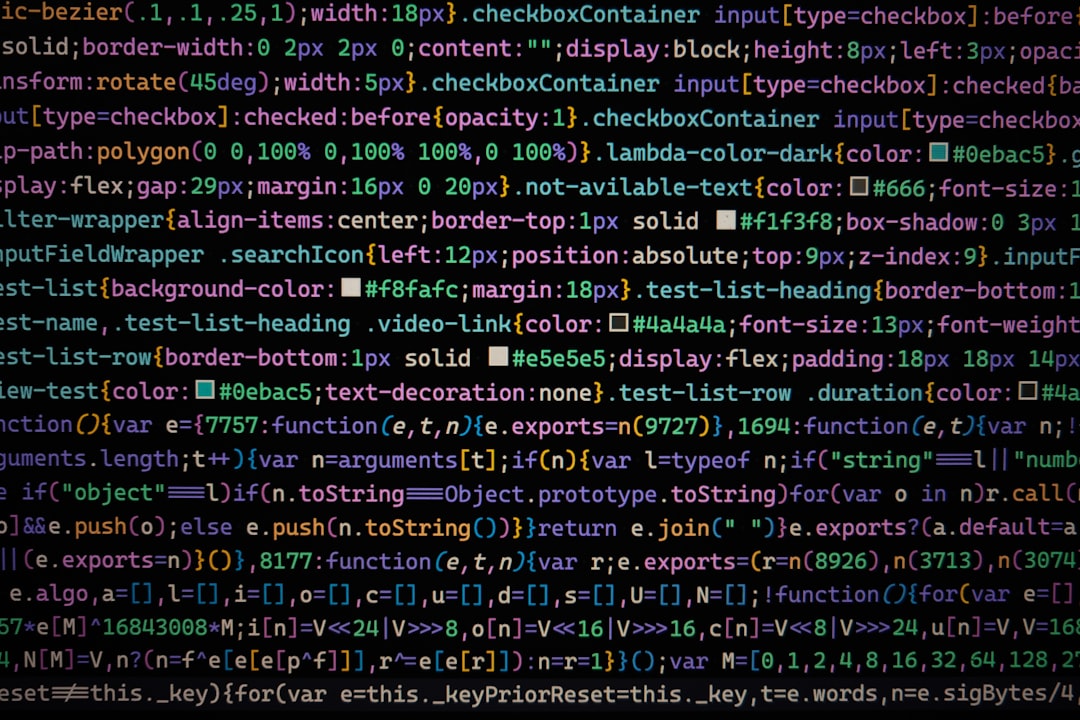The Ultimate TypeScript Best Practices Guide for Modern Development
In the landscape of modern web development, JavaScript has long been the reigning monarch. However, as applications grow in scale and complexity, the dynamic and loosely-typed nature of JavaScript can become a significant source of bugs and maintenance headaches. Enter TypeScript, a statically-typed superset of JavaScript developed by Microsoft. By adding a powerful type system on top of familiar JavaScript syntax, TypeScript enables developers to build more robust, scalable, and self-documenting applications. It’s no longer just a niche tool; it’s a cornerstone of major frameworks like Angular, NestJS, and is the preferred choice for countless React and Node.js projects.
This comprehensive guide will take you beyond the TypeScript basics and into the realm of professional development. We’ll explore core concepts, advanced patterns, and tooling best practices that will help you write cleaner, more maintainable, and less error-prone code. Whether you’re migrating a legacy JavaScript project or starting a new one from scratch, these actionable insights will elevate your TypeScript skills and empower you to build enterprise-grade applications with confidence.
Mastering the Fundamentals: Core Concepts and Typing Strategies
A solid foundation is crucial for leveraging TypeScript effectively. Before diving into complex patterns, it’s essential to master the core principles that govern its type system. Adopting these fundamental best practices from the start will save you countless hours of debugging and refactoring down the line.
Embrace Strict Mode: Your First Line of Defense
The single most important step you can take in any TypeScript project is to enable strict mode. In your tsconfig.json file, set "strict": true. This is not a single flag but a suite of type-checking options that enforce a higher degree of correctness. Key flags enabled by strict mode include:
- noImplicitAny: Flags any variable or parameter that implicitly has an
anytype. This forces you to be explicit about your types. - strictNullChecks: Distinguishes between
null,undefined, and actual values, preventing a whole class of common runtime errors. - strictFunctionTypes: Ensures contravariance of function parameters, leading to safer function typing.
Starting a project without strict mode is like building a house on a shaky foundation. It might seem easier at first, but it undermines the very safety net that TypeScript is designed to provide.
Prefer `interface` for Object Shapes, `type` for Primitives and Unions
TypeScript offers two primary ways to define custom types: interface and type. While they often overlap in functionality, they have distinct use cases. A widely accepted best practice is:
- Use
interfaceto define the shape of objects or the contract of a class. Interfaces support declaration merging (allowing you to extend them from multiple sources) and are generally better suited for object-oriented programming patterns. - Use
typefor creating aliases for primitive types, union types, intersection types, or complex tuples.
This separation of concerns leads to more readable and predictable code. For example, if you are defining the data structure for a user profile, an interface is the ideal choice.

// Best Practice: Use `interface` for defining the shape of an object
interface UserProfile {
id: number;
username: string;
email: string;
isActive: boolean;
lastLogin?: Date; // Optional property
}
// Best Practice: Use `type` for a union type
type UserStatus = "active" | "inactive" | "pending";
function checkUserStatus(user: UserProfile): UserStatus {
if (!user.isActive) {
return "inactive";
}
// Let TypeScript infer the return type of the function based on its logic
return user.lastLogin ? "active" : "pending";
}
const user: UserProfile = {
id: 1,
username: "dev_user",
email: "dev@example.com",
isActive: true,
};
console.log(`User status: ${checkUserStatus(user)}`);Practical Implementation: Functions, Async Operations, and the DOM
TypeScript truly shines when applied to everyday JavaScript tasks. Properly typing functions, handling asynchronous operations, and interacting with the DOM can eliminate entire categories of runtime errors and make your code significantly easier to reason about.
Typing Asynchronous Code with `async/await`
Modern web applications are inherently asynchronous. When fetching data from an API, you’re working with Promises. TypeScript provides excellent support for typing these operations. The return type of an async function should always be a Promise<T>, where T is the type of the data the promise will resolve with.
This practice provides invaluable autocompletion and type-checking for the data you receive, preventing errors that might only surface at runtime. Consider this practical example of fetching user data from a remote API.
// Define the shape of the API response data
interface UserApiResponse {
id: number;
name: string;
username: string;
email: string;
address: {
street: string;
city: string;
zipcode: string;
};
}
/**
* Fetches a user profile from a public API.
* @param userId The ID of the user to fetch.
* @returns A Promise that resolves to the user's data.
*/
async function fetchUserProfile(userId: number): Promise<UserApiResponse> {
try {
const response = await fetch(`https://jsonplaceholder.typicode.com/users/${userId}`);
if (!response.ok) {
throw new Error(`HTTP error! Status: ${response.status}`);
}
// The .json() method returns a Promise<any>, so we cast it to our expected type.
const userData: UserApiResponse = await response.json();
return userData;
} catch (error) {
console.error("Failed to fetch user:", error);
// Re-throw the error to allow the caller to handle it
throw error;
}
}
// Example usage
async function displayUser(userId: number) {
try {
const user = await fetchUserProfile(userId);
console.log(`User Name: ${user.name}`);
console.log(`City: ${user.address.city}`);
} catch (error) {
console.log("Could not display user data.");
}
}
displayUser(1);Interacting with the DOM Safely
When working with the DOM, TypeScript is aware that an element you query might not exist, so document.querySelector returns a type of ElementType | null. This forces you to handle the `null` case, preventing “Cannot read properties of null” errors.
Furthermore, you can use type assertions or generic parameters to tell TypeScript the specific type of element you expect, giving you access to its unique properties (like .value on an input element) in a type-safe way.
// Assume you have an HTML file with: <input type="text" id="username-input" />
function handleFormInitialization() {
// Use a generic to tell querySelector what kind of element to expect.
const inputElement = document.querySelector<HTMLInputElement>("#username-input");
// Best Practice: Always check for null before accessing properties.
if (inputElement) {
// TypeScript now knows `inputElement` is an HTMLInputElement,
// so it allows access to the `.value` property.
console.log(`Initial input value: ${inputElement.value}`);
inputElement.addEventListener('input', (event) => {
// Use a type assertion if TypeScript can't infer the target type.
const target = event.target as HTMLInputElement;
console.log(`Current value: ${target.value}`);
});
} else {
console.error("Could not find the username input element!");
}
}
// Run the function after the DOM is loaded
document.addEventListener('DOMContentLoaded', handleFormInitialization);Advanced TypeScript Patterns and Techniques
Once you’re comfortable with the basics, you can unlock even more power with TypeScript’s advanced features. Generics, utility types, and custom type guards are essential tools for writing highly reusable, flexible, and type-safe code in complex applications.
Harnessing the Power of Generics for Reusability
Generics are one of TypeScript’s most powerful features. They allow you to write functions, classes, or interfaces that can work over a variety of types rather than a single one. This promotes code reuse without sacrificing type safety. A classic example is a function that wraps an API response.

Creating Custom Type Guards for Complex Logic
When dealing with union types, you often need to determine which specific type a variable holds within a block of code. While `typeof` and `instanceof` work for primitives and classes, you need custom type guards for interfaces. A type guard is a function that returns a boolean `type predicate` (e.g., data is SuccessResponse). TypeScript understands that if this function returns `true`, the variable’s type is narrowed within that conditional block.
Let’s combine generics and type guards to create a robust API handling function.
// Define generic success and error response shapes
interface SuccessResponse<T> {
status: 'success';
data: T;
}
interface ErrorResponse {
status: 'error';
error: {
code: number;
message: string;
};
}
// A union type for any possible API response
type ApiResponse<T> = SuccessResponse<T> | ErrorResponse;
// A custom type guard to check if the response was successful
function isSuccessResponse<T>(response: ApiResponse<T>): response is SuccessResponse<T> {
return response.status === 'success';
}
// A generic function to process the API response
function processApiResponse<T>(response: ApiResponse<T>) {
if (isSuccessResponse(response)) {
// Inside this block, TypeScript knows `response` is of type `SuccessResponse<T>`
// and that `response.data` exists and is of type `T`.
console.log("Success! Data received:", response.data);
} else {
// Inside this block, TypeScript knows `response` is of type `ErrorResponse`.
console.error(`Error ${response.error.code}: ${response.error.message}`);
}
}
// --- Example Usage ---
interface Product {
id: string;
name: string;
price: number;
}
const successfulProductResponse: ApiResponse<Product> = {
status: 'success',
data: { id: 'abc-123', name: 'Super Widget', price: 99.99 },
};
const failedProductResponse: ApiResponse<Product> = {
status: 'error',
error: { code: 404, message: 'Product not found' },
};
processApiResponse(successfulProductResponse);
processApiResponse(failedProductResponse);Tooling, Configuration, and Project-Wide Best Practices
Writing great TypeScript code isn’t just about syntax; it’s also about leveraging the rich ecosystem of tools that support it. A well-configured project ensures consistency, catches errors early, and streamlines the development process for the entire team.
Your `tsconfig.json`: The Project’s Constitution
Your tsconfig.json file is the heart of your TypeScript project. Beyond setting "strict": true, consider these essential options:

- “target”: “ES2020” (or newer): Compiles your code to a modern version of JavaScript, preserving features like
async/awaitnatively. - “module”: “ESNext” and “moduleResolution”: “node”: Use modern ES modules and the standard Node.js resolution algorithm.
- “esModuleInterop”: true: Improves compatibility between CommonJS and ES modules.
- “sourceMap”: true: Generates source maps, which are crucial for debugging your original TypeScript code in the browser or Node.js.
Enforce Code Quality with ESLint and Prettier
Static analysis and automated formatting are non-negotiable for professional projects.
- ESLint, with the help of
@typescript-eslint/parserand@typescript-eslint/eslint-plugin, lints your TypeScript code, catching potential bugs and enforcing coding standards. - Prettier is an opinionated code formatter that automatically ensures your entire codebase has a consistent style.
Testing with Jest and TypeScript
Testing is a critical part of software development. Frameworks like Jest work seamlessly with TypeScript using the ts-jest package. This allows you to write your unit tests and integration tests in TypeScript, benefiting from the same type safety and autocompletion you have in your application code.
Conclusion: Building a Better Future with TypeScript
Adopting TypeScript is a strategic investment in the long-term health and maintainability of your codebase. By moving beyond the basics and embracing a comprehensive set of best practices, you can unlock its full potential. The journey starts with a strict configuration and a solid grasp of core typing principles. It continues with the practical application of types to everyday asynchronous and DOM-related tasks. Finally, mastery is achieved by leveraging advanced patterns like generics and type guards to build truly reusable and robust components.
By combining powerful language features with a robust tooling ecosystem including ESLint, Prettier, and Jest, you create a development environment that minimizes errors, enhances collaboration, and scales gracefully. As you move forward, challenge yourself to apply these patterns in your next project. Whether you’re working with TypeScript in React, Node.js, or Vue, these principles are universal and will empower you to write code that is not only correct today but also easy to understand and maintain for years to come.




